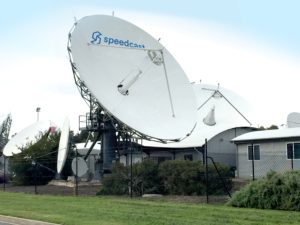Satellite communications provider Speedcast last week announced it had grown its ground network to 30 gigabits per second (Gbps) capacity, adding 13 Gbps during the month of May.
Houston-based Speedcast serves cruise demand in the Mediterranean, among other areas. “We added 13 Gbps in the Med in a week,” Spytek said. “But we had an 11 Gbps shortfall in the Caribbean, where we need to find capacity in the fall. We’re nearly there.”
Capacity constraints
Although a significant amount of satellite capacity in all orbits will be online soon, it’s not there yet, and satellite constellation provider Starlink does not sell wholesale capacity, Spytek noted. That soon-to-be-launched capacity includes SES’ (EPA:SESG) O3b mPower satellites in mid Earth orbit (MEO), Hughes Network Systems’ Jupiter 3 geostationary Earth orbit (GEO) satellite to be launched in Q1 2023, and SES-22 and SES-23 in C-band.
New ground requires the cloud
New demand is driven in part by new services. As satellite operators move into providing services, each has a slightly different strategy. At Speedcast, that strategy is through SIGMA, its Amazon Web Services-certified platform that integrates virtual machines and virtual network functions enabling rapid reconfiguration as well as the remote management of assets.
SIGMA also integrates very small aperture terminal (VSAT), cellular backhaul and L-band connectivity, and is designed to connect to future non-geostationary satellite services to ensure high availability and throughput, according to Speedcast.
“When I joined Speedcast, I thought SIGMA was one of the most impressive things I’d seen,” Spytek said.
However, customers have been reluctant to replace hardware with cloud services because the change replaces capital expenditures with ongoing operational expenditures.
As a result, customers are putting some — but not all — of their infrastructure into the cloud, Vaibhav Magow, vice president of the international division at Hughes, told Connectivity Business News.
Customers are placing operations in the cloud worth 20% to 30% of revenues, Magow said, but once they place 50% to 60% of revenues in the cloud, they can look forward to savings of 20% to 30% over a period of five to seven years as virtual hardware replaces physical hardware.
Editor’s Note: This story has been changed to reflect the fact that Speedcast grew its capacity to 30 Gbps, not 51 Gbps as originally stated.










